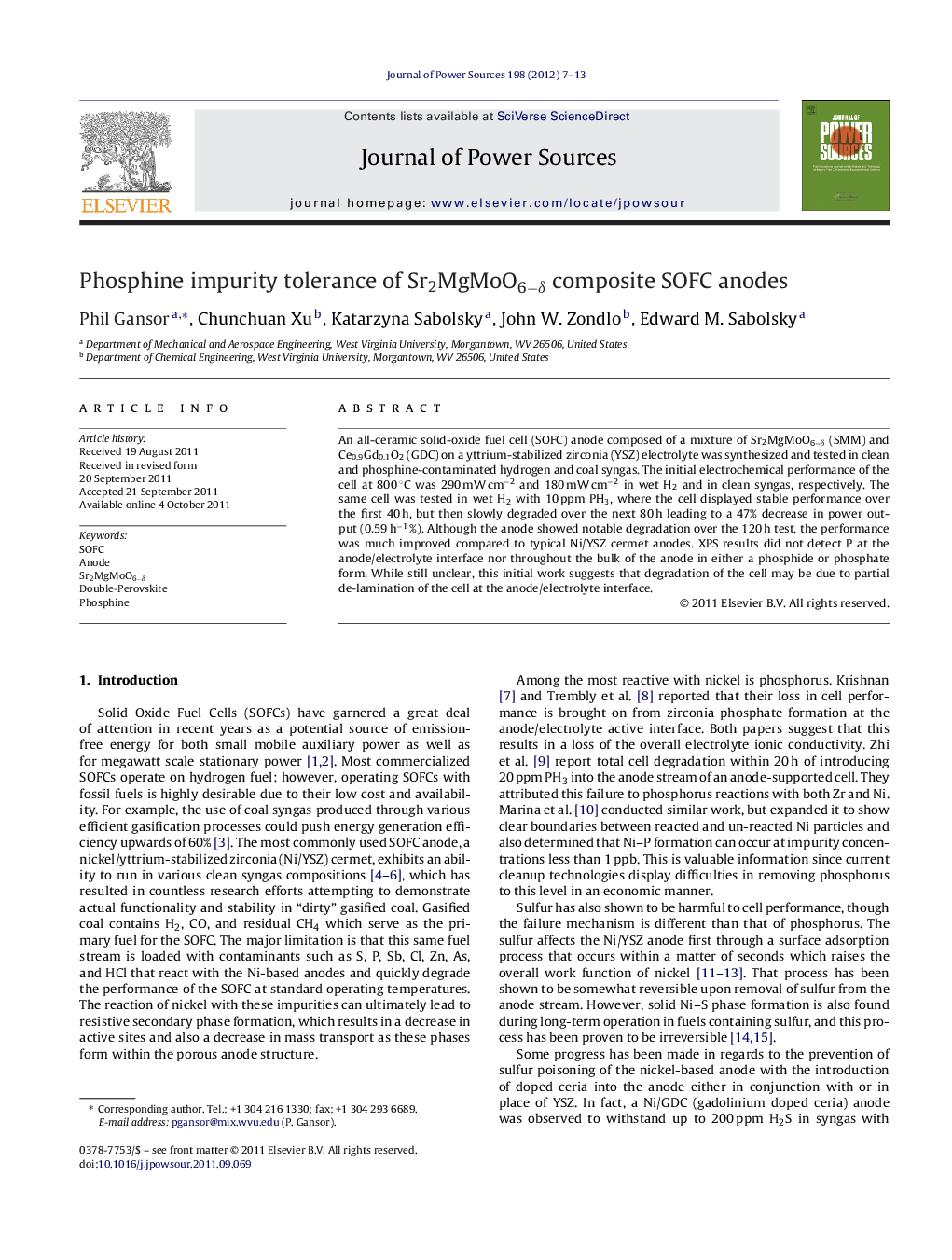| Article ID | Journal | Published Year | Pages | File Type |
|---|---|---|---|---|
| 1288383 | Journal of Power Sources | 2012 | 7 Pages |
An all-ceramic solid-oxide fuel cell (SOFC) anode composed of a mixture of Sr2MgMoO6−δ (SMM) and Ce0.9Gd0.1O2 (GDC) on a yttrium-stabilized zirconia (YSZ) electrolyte was synthesized and tested in clean and phosphine-contaminated hydrogen and coal syngas. The initial electrochemical performance of the cell at 800 °C was 290 mW cm−2 and 180 mW cm−2 in wet H2 and in clean syngas, respectively. The same cell was tested in wet H2 with 10 ppm PH3, where the cell displayed stable performance over the first 40 h, but then slowly degraded over the next 80 h leading to a 47% decrease in power output (0.59 h−1 %). Although the anode showed notable degradation over the 120 h test, the performance was much improved compared to typical Ni/YSZ cermet anodes. XPS results did not detect P at the anode/electrolyte interface nor throughout the bulk of the anode in either a phosphide or phosphate form. While still unclear, this initial work suggests that degradation of the cell may be due to partial de-lamination of the cell at the anode/electrolyte interface.
► We investigate an Sr2MgMoO6−δ/Ce0.9Gd0.1O2 anode for PH3 poisoning investigation. ► Degradation rate of the anode was much less than that of the standard Ni/YSZ anode. ► Anode was stable in syngas making this anode promising for use with coal fuels.
